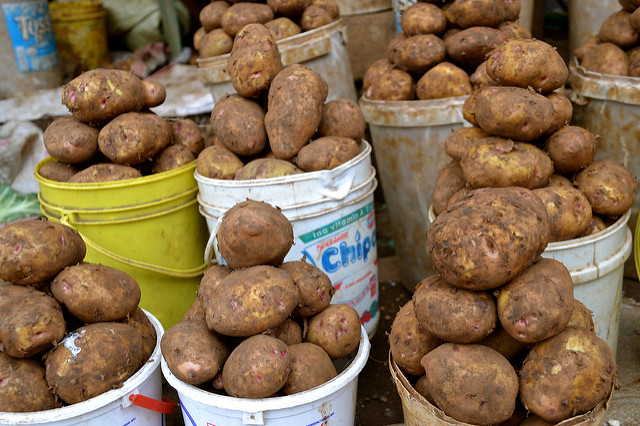
Credit: C.Schubert
Due to time and resource constraints my MSc thesis focuses on post-harvest interventions to reduce food losses. However, this does not mean that losses are confined to the post-harvest stages of the supply chain. On the contrary, losses occur at all stages of the supply chain, from the pre-harvest stage to consumption stage. To recap, food losses denote food that spoils, spills, incurs an abnormal reduction in quality such as bruising or otherwise gets lost before it reaches the consumer (Lipinski et al., 2013). The harvest and pre-harvest stages of the supply chain are often neglected. For instance, in the FAO’s (2014) definitional framework of food loss food only encompasses crops that are harvest mature, animals that are ready for slaughter, milk drawn from the udder, eggs laid by the bird, farmed fish that is mature and wild fish that have been caught. In my opinion this omits the key pre-harvest stage of the food supply chain-a lot of decisions and actions taken before crops, livestock etc. are mature can lead to the removal of food from the chain.
A recent study conducted by GIZ (2014) analysed the potato industry in Kenya. Their study found that losses of the crop from leaving produce in the field, harvesting in the rain, damage caused by harvesting tools (especially the fork jembe) and damage caused by harvesting labour account for 12% of the total crops that ended up lost or damaged. This is a significant figure that should not be ignored. However, GIZ (2014) identify additional key factors that take place prior to harvesting that can influence losses at the harvesting stage. Examples include the practice/non-practice of crop rotation, leaving “volunteer plants” in the soil for the next season and the use of certified and “clean” seed. These factors influence soil fertility and consequently yields and pest and disease proliferation and vulnerability. These decisions made at production level can influence losses at later stages of the chain and they should not be ignored. It is regrettable that my study could not include these factors, although the study of pre-harvest processes represents a fascinating opportunity that may be pursued later in my career.
References
FAO (2015) Definitional Framework of Food Loss. Unedited working paper, SAVE FOOD Initiative, Food and Agriculture Organization of United Nations, Rome. http://www.fao.org/fileadmin/user_upload/save-food/PDF/FLW_Definition_and_Scope_2014.pdf
GIZ, (2014). Post-Harvest Losses in Potato Value Chains in Kenya, (August).
Lipinski, B., Hanson, C., Lomax, J., Kitinoja, L., Waite, R., & Searchinger, T. (2013). Reducing Food Loss and Waste. World Resource Institute, (June), 1–40. Retrieved from http://unep.org/wed/docs/WRI-UNEP-Reducing-Food-Loss-and-Waste.pdf
Check out the full GIZ report here to find out more!
https://www.giz.de/fachexpertise/downloads/PHL_in_potato_value_chains_in_Kenya_web.pdf
